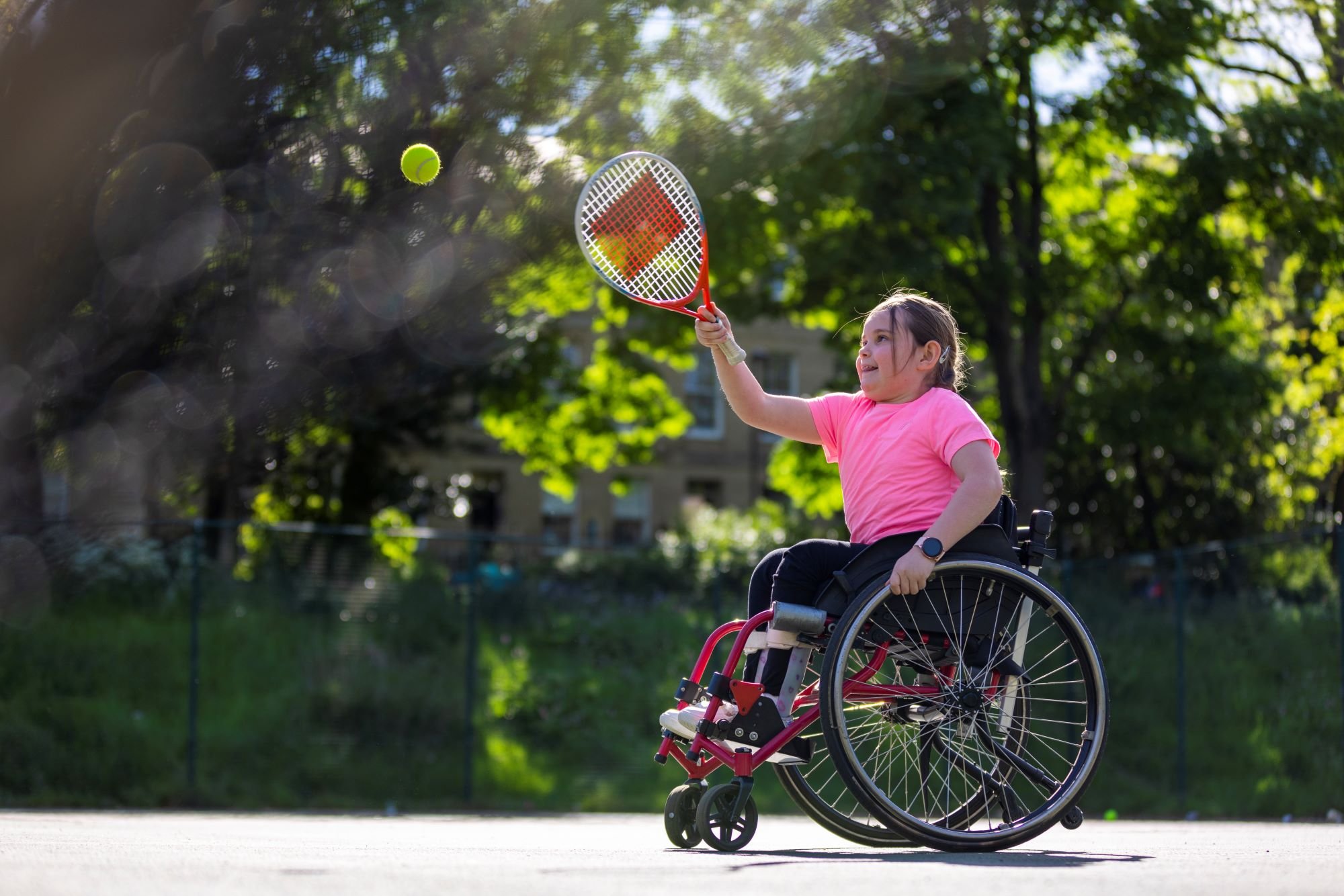
Research
The Lilly and Blair Foundation is proud to fund multiple cutting-edge research projects. With your support, we can continue to drive these critical efforts forward and uncover breakthrough treatments that will change the lives of children and families affected by this disease.
Paths to a Treatment or Cure
-

AAV9 Gene Therapy Project for SPG4
Gene therapy replaces a disease-causing or mutated gene with a new, healthy copy of the gene. Studies of AAV9 vectors have shown promise for all types of SPG4, regardless of the specific mutation, by knocking out and replacing the SPAST gene
Read more about this project >> -

New Mouse Model
In an effort to expand upon the available therapeutic avenues for childhood-onset, de novo SPG4, The Lilly and Blair Foundation has fully funded the development of a new mouse model that - for the first time - will replace both mouse SPAST genes for human SPAST genes, with one bearing a mutation found in people with SPG4.
Read more about this project >>
Ongoing Research Areas
In addition to the flagship projects above, we are actively supporting or tracking research in several complementary areas. Each of these approaches could yield a therapeutic strategy for SPG4, and together they form a multi-pronged attack on the disease:
-
Antisense Oligonucleotides (ASOs)
ASOs are short, synthetic strands of DNA or RNA that can bind to the mutant RNA produced by a faulty gene, targeting it for destruction or otherwise preventing it from making a harmful protein. In SPG4, an ASO could potentially “silence” the mutant SPAST gene, stopping production of toxic mutant spastin protein, while leaving the healthy gene copy still making functional spastin. ASOs have shown promise in other neurogenetic diseases (like spinal muscular atrophy). The challenge for SPG4 is that the disease mechanism isn’t fully understood yet – we need to learn more to design the most effective ASO therapy.
Our contribution: In May 2024, we funded the creation of the new SPG4 mouse model (see above) which will be crucial for ASO development. Once this humanized mouse is available, researchers can test ASOs in it to see if turning off the mutant SPAST gene improves the mice’s symptoms. This will give a clear signal whether ASOs could work in children with SPG4.
Lead Researcher: Peter Baas, PhD – Drexel University College of Medicine -
HDAC6 Inhibitors
Recent scientific findings have shed light on how SPG4 mutations harm neurons. One discovery is that SPG4 (mutant spastin) leads to a buildup of dysfunctional microtubules and proteins, and it appears to overly activate an enzyme called HDAC6. HDAC6’s overactivity further destabilizes important structures in nerve cells. In laboratory experiments, blocking HDAC6 with a drug called Tubastatin A (Tub A) produced remarkable benefits: mice engineered to have an SPG4-like condition had improved movement and less nerve damage when treated with Tub A. Likewise, human neurons grown from SPG4 patients’ cells showed less damage when Tub A was applied.
These promising results suggest that HDAC6 inhibitors like Tubastatin A might protect neurons in SPG4 by preventing some of the downstream damage caused by mutant spastin. More research is needed, but this avenue could lead to a drug treatment (a pill or injection) that slows the disease.
Lead Researcher: Liang Oscar Qiang, MD, PhD – Drexel University College of Medicine. -
Registry and Natural History Study
One of the most important foundations for any rare disease therapy is a strong patient registry and natural history study. Boston Children’s Hospital is leading an ongoing study collecting detailed clinical data and biological samples from children and young adults (up to age 18) with early-onset SPG4. By tracking these patients over time, researchers can document how the disease progresses, which symptoms appear when, and how quickly abilities change.
Why it matters: This study will define the natural history of childhood-onset SPG4 – knowledge that is invaluable for designing clinical trials. It helps identify measurable endpoints (for example, specific milestones or functional scores) that can show whether a treatment is making a difference. It also provides a pool of potential participants when trials are ready. Our foundation actively encourages families to enroll in this study because each datapoint brings us closer to effective treatments.
Lead Researcher: Darius Ebrahimi-Fakhari, MD, PhD – Boston Children’s Hospital. -
Small Molecule Drugs and AKV9
Small molecules are traditional drugs – compounds that can easily enter cells and alter biological processes. Researchers are investigating various small molecules for upper motor neuron diseases (the category of disorders that includes HSP). One compound of interest is AKV9 (also known as NU-9), which was developed for ALS (another motor neuron disease). In July 2023, AKV9 received FDA approval to begin Phase 1 safety trials in humans (for ALS).
While AKV9 is not developed specifically for SPG4, its mechanism – protecting upper motor neurons – could be relevant. We are closely following the progress of AKV9 and similar compounds. If they prove safe and effective in related conditions, there is potential to repurpose them for SPG4 or use them as a starting point for SPG4-specific drug development. Our team’s strategy includes staying abreast of all advances in motor neuron disease research that could translate into treatments for spastic paraplegia.
Key Collaborator: Hande Ozdinler, PhD – Northwestern University, developer of NU-9.

Together We Can
Time is not on our side, but we hope you will be.
